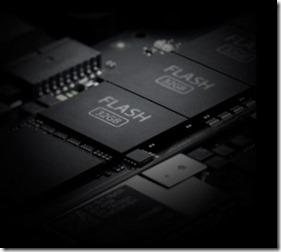 NEWS
NEWS
 NEWS
NEWS
 NEWS
NEWS
A new infrastructure stack is evolving with the principal elements being flash storage, hyper-convergence/Server SAN, OpenStack and containers. Some of these are causing a lot of excitement, but each is in a different stage of development, and users should expect more to come, writes Wikibon Senior Analyst Stuart Miniman in his latest Wikibon Alert, “Realities of the New Infrastructure.” He and Wikibon Analyst Brian Gracely discuss the state of these technologies in the accompanying video (see below).
The big attraction of flash storage is speed. Flash arrays have orders-of-magnitude faster read/write response times, particularly with random data. This translates into noticeably faster response time from core applications. Early adopters have measured significant increases in productivity after moving production databases from spinning disk to flash, just by eliminating the constant wait times that the slow and inconsistent response speeds of disk imposes.
Customers are past asking “why” flash, but they still do not fully comprehend the potential impact on applications and business operations. Flash is becoming more prevalent in large public clouds as evidenced by all-SSD (solid-state disk) offerings from Amazon Web Services (AWS) and Microsoft Azure. Most customers think of flash in terms of traditional storage arrays. However, flash is taking on different forms. The big cloud companies like Facebook and Amazon do not have separate all-flash arrays. Rather, their flash storage is built into the server. The all-flash data center is still in the future, the analyts agree. While flash is fast taking over storage of latency data, disk and tape still dominate capacity storage.
Converged and hyperconverged systems are designed to attack IT complexity. Simplifying the delivery and operation of infrastructure, Miniman writes, is the largest opportunity to help IT organizations. These options hold the promise to reduce the average 75% of the IT budget spent on “keeping the lights on” and provide more resources for innovation, which IT organizations need to keep up with fast-evolving new technologies. While these systems are usually deployed as appliances, they are software-defined. Dell Inc.’s OEM relationship with Nutanix Inc. and Cisco Systems Inc.’s partnership SimpliVity Inc. address the popularity of software-based hyper-converged solutions, and this is the primary focus on Maxta Inc. and ScaleIO Inc. They create pools of storage rather than traditional arrays. Miniman predicts that these new architectures will disrupt the traditional storage architecture market over the next decade.
The open-source OpenStack cloud operating systems is competing with VMware Inc. to be the leading technology for private clouds, although OpenStack is not a single solution or product and VMware offers itw own VMware Integrated OpenStack (VIO). Several other vendors, including IBM (BlueBox), Cisco (Metacloud), Platform9 Systems Inc., and Hewlett-Packard Co. (Helion) also offer cloud solutions based on OpenStack. Miniman likens OpenStack to Linux and predicts that it will become a critical component of the stack, particularly as an integration engine for new technologies.
With 500 million downloads in the last year, Docker has sparked excitement around containers in the development and DevOps communities. However, container technology is still in early stages of maturity, and the evolving container architecture is complex and requires extensions into storage and networking. And Docker is not the only choice out there – CoreOS Inc., Hashicorp Inc. and the open-source himKubernetes are also gaining interest. The container marketplace is community-centric, similar to VMware a decade ago, but maturing and growing even faster, Miniman writes. Microsoft is moving very fast to support Linux containers in Azure and to create a Windows-based container technology. The new Open Container Initiative (OCI) designates the runC lightweight runtime platform as a standard vendors. However, containers are still rare in production at scale in enterprises. Security is weak, and persistent storage and advanced networking are still in early days.
Cloud-native application platforms, also known as platform-as-a-service (PaaS), are getting a lot of attention and a new organization called the Cloud Native Computing Foundation is driving standardization. Currently, platforms are wildly divergent in their origins, capabilities and design philosophies, and adopting a software development platform is a large leap for companies. PaaS is the smallest piece of the overall public cloud market, and Miniman believes that despite its strong growth, it will remain smaller than either software-as-a-service or infrastructure-as-a-service.
These technologies are changing the vendor landscape and enterprise IT infrastructure significantly. However, Miniman says, they are not silver bullets. CIOs must have a solid understanding of their application portfolios and the needs of their businesses to understand how to get maximum advantage for new infrastructure.
THANK YOU